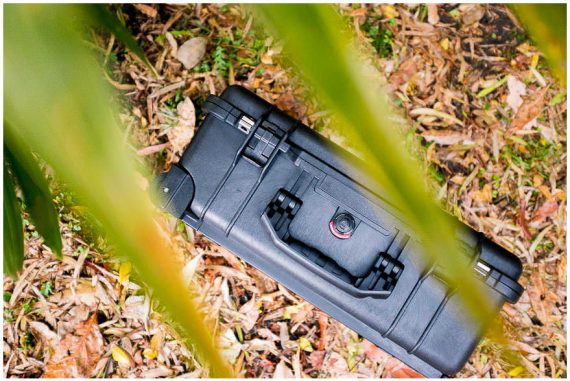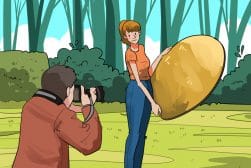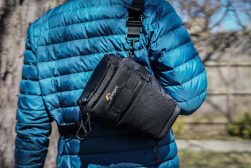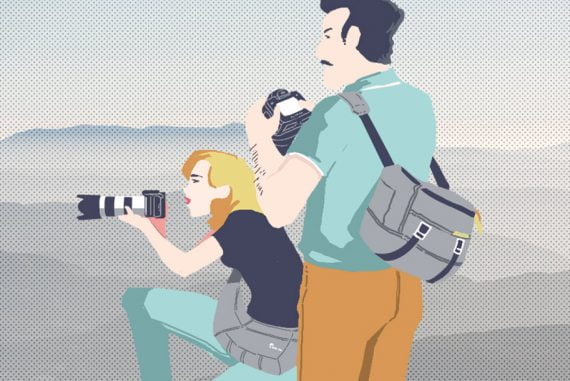


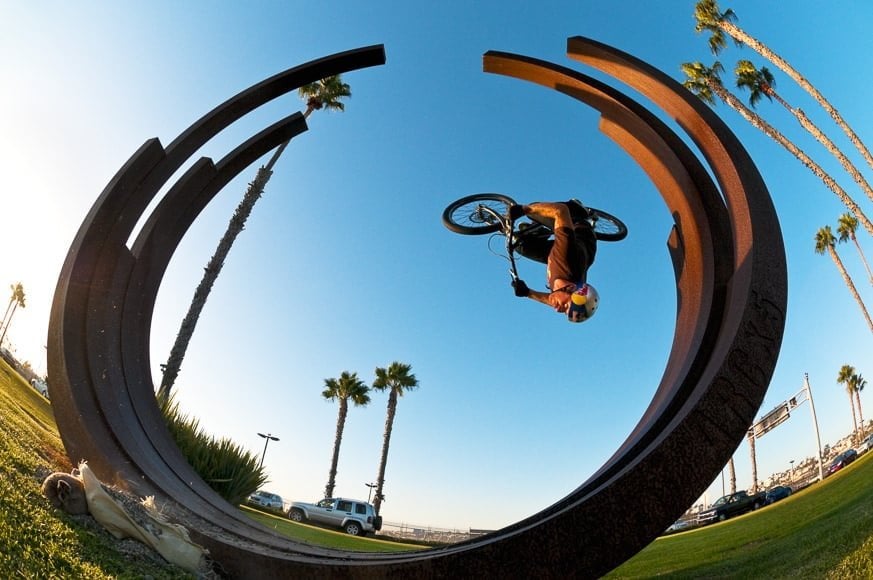
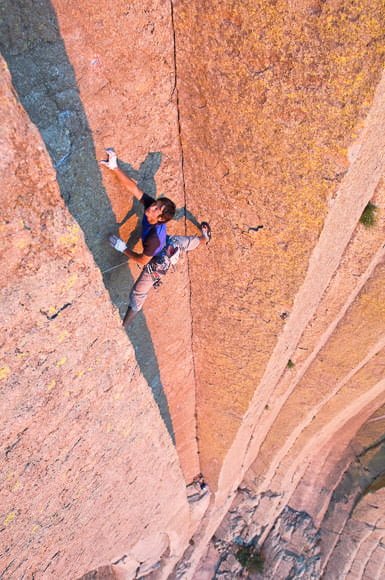
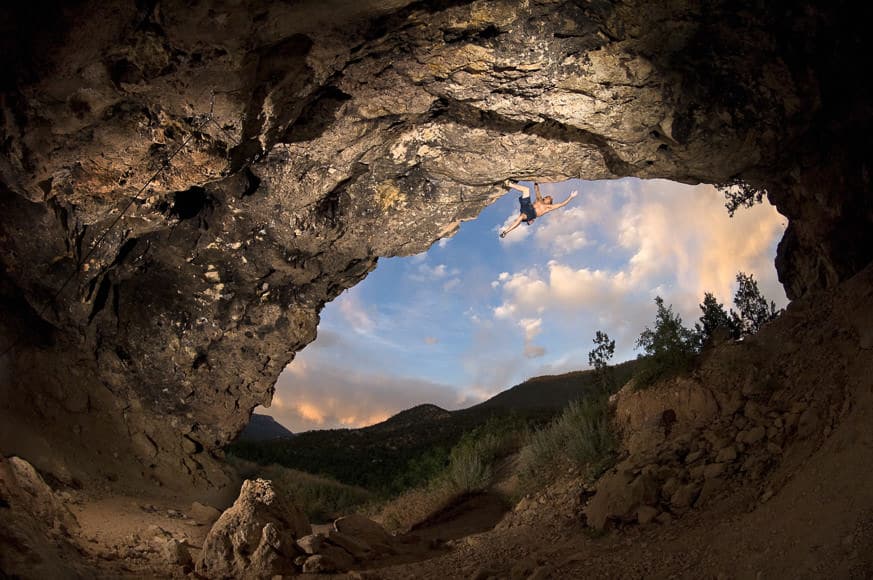



Michael Clark
Sports | Last Updated: April 4, 2024
Before we get all crazy about gear, I want to be very clear that everything we are discussing here is just a tool. There are a huge variety of tools in the photo industry and I have chosen the gear I use carefully so that it will give me superb, predictable results with the best possible image quality for what I shoot.
In a recent discussion with a colleague, we laughed about how obsessed people get with cameras and geek out about choosing the right one.
As an analogy, consider a great chef, who prepares a world-class dish for their restaurant. When you taste that dish, the first thought that comes to your mind is, “Wow, that is amazing! How did they do it?” You don’t ask which stove or what brand of pots they used to cook the meal.
Of course, cameras are a bit more complex than the average stove or set of pots and pans. So, with that said, just because I choose a certain tool doesn’t mean it is the perfect one for you.
Stepping off my soapbox, and into this gear discussion, I have been shooting with Nikon cameras since I was 14 years old. My Nikon cameras are like old friends that just keep getting better. I have shot with a huge variety of cameras over the years, starting with an old Nikon FE2 film camera and also the venerable FM2. I eventually moved up to the Nikon F3, then into the N90s, and my last film camera was the F5, which sits on a bookshelf these days as a decoration.
I moved into digital photography cautiously in 2004 starting out with the Nikon D70. The Nikon D2x was the first Nikon DSLR that really wowed me enough to shoot the bulk of my work digitally. I also had the Nikon D200, D300, D300s and D700 cameras at one point or another.
The Nikon D700 was a workhorse camera for three or four years. The Nikon D4 and Nikon D800 are my current cameras of choice and the D800 was revolutionary when it was released. I just recently upgraded to the Nikon D810, which is by far the best Nikon I have ever shot with. The image quality is astounding with that camera and even the latest Canon and Sony cameras will have a hard time surpassing it.
I have made 5-foot long prints from the Nikon D800 and my jaw was dragging on the floor for at least an hour afterwards – the 5-foot print was no different than the 13×19 inch test print. I am not sure how much more resolution we actually need but of course, no one will complain that there was ever too much resolution.
In terms of how I use the Nikon D810 and the Nikon D4, as you might have guessed the D4 is my main working camera for sports photography though I have found the D810 to be quite capable in that realm as well.
The Nikon D810 is my go to camera for any and everything non-sports related like portraits, lifestyle, landscape and general photography. If I am shooting in low-light conditions then I pull out the D4, which even at ISO 12,800 has very little noise.
As an adventure photographer I am pretty hard on cameras. Back when I was shooting with Nikon D700 camera bodies, I killed at least three of those in three years. I have also had numerous lens mounts replaced on both my camera bodies and many of my lenses…somehow I seem to bend the lens mounts. Hence, as you can imagine, the main consideration for me is that the cameras are tough.
Often I am in crazy remote areas with only one camera body and one lens so if a camera went down that would severely limit my ability to create photographs. I also look for cameras with high-resolution sensors, a high framing rate, and a wide dynamic range. I can’t wait for the days when we have 36 MP cameras that can shoot at 10-15 fps and with very little noise at high ISOs. Those days may not be that far off.
As for lenses, I own (and have owned and used) a wide variety of Nikkor lenses over the years. Currently, my main lenses are the big three Nikkor 2.8 zooms: the Nikkor 14-24mm f/2.8, the Nikkor 24-70mm f/2.8 and the Nikkor 70-200mm f/2.8 VRII. These three lenses are the core of my lens collection and go on pretty much every shoot with me.
My other standard lenses include the Nikkor 16mm f/2.8 Fisheye and the Nikkor 85mm f/1.4G. These are a bit more specialized but are key lenses for much of my work. I call the Fisheye my “secret weapon” lens because it is so versatile and for adventure sports it allows me to create images that boggle the mind. The 85mm is a workhorse lens for portraits and no matter what the lighting conditions I can always pull it out and shoot stunning close-up portraits at f/1.4.
My trusty Nikon TC-14E 1.4x Teleconverter also goes with me on a lot of assignments. It is a great, lightweight addition when I need a little extra reach.
I do have a few other fixed focal length lenses, my ancient Nikkor 24mm f/2.8D and a Nikkor 50mm f/1.4G.
Lastly, I just sold off my Nikkor 200-400mm f/4 but I am looking to replace it here shortly, either with a Nikkor 300mm f/2.8 or the new lightweight Nikkor 300mm f/4 PF (Phase Fresnel) lens. The 200-400 was my main surfing photography lens, but I am looking for a lighter, more versatile option, which is why I sold it.
I also rent quite a few lenses when I need them and depending on the assignment. I rent the Nikkor 16-35mm f/4, the Nikkor 70-200mm f/4 every once in a while when I need or want lighter weight lenses for extended trips in remote regions.
I have rented all of the giant Nikkor lenses multiple times over the years including the 300mm, 400mm, 500mm and 600mm lenses.
For shooting in the water, I have a custom made CMT Water Housing for my Nikon D4 along with various lens ports that can work with my 16mm fisheye, a 16-35mm lens, an 85mm lens and a 70-200mm lens.
The CMT water housing is made of carbon fiber and rated for a depth of 35-feet. It is a surf housing, not a dive housing. It is also the lightest surf housing you can find for a pro camera, which is key when swimming in huge waves with one arm.
In terms of lighting gear, I have an insane amount of strobe equipment and more light modifiers than I can reasonably take anywhere. I also have a fairly robust Speedlight kit. I will say that I am a snob when it comes to light, and as a result, I prefer larger strobes over Speedlights.
For most of my work, I have to place the strobe quite a ways away from the athlete and overpower daylight so that requires powerful battery-powered strobes. I use Elinchrom strobes because they are tough, weatherproof and because they have super-short flash durations at the highest power settings. They also allow me to use Hypersync, which is a revolutionary flash technology, especially for adventure sports photographers.
For most of my work I rely on battery-powered strobes because I am usually way back in the middle of nowhere. I have multiple Elinchrom ELB400 400 Watt/sec (Ws) packs and heads, multiple Elinchrom Ranger RX Speed AS 1,200 Ws packs and heads, and an Elinchrom Ranger RX Ringflash that attaches to the Ranger pack.
I also have a few of the Elinchrom ELC Pro HD 1,000 Ws monoblocs that get used for studio work or are plugged into a generator if we are close to a road. As you can see below in the partial list of my gear, I have a huge variety of light modifiers for the Einchrom flash heads. My main modifiers are the Elinchrom 39″ Rotalux Deep OctaBox and the Elinchrom Rotalux 59″ Indirect Softbox.
I also seem to use the Elinchrom High Performance Reflector quite often these days, especially when shooting with Hypersync lighting techniques.
As for Speedlights I have two Nikon SB-900 Speedlights and one older Nikon SB800. I have Honl and LumiQuest light modifiers for the Speedlights.
[Side Note: I wrote an entire 277-page e-book on using artificial lighting in the outdoors – that book is entitled, Location Lighting for the Outdoor Photographer, and is available on my website.]In terms of grip equipment, I have an array of tripods ranging from lightweight versions to heavy-duty tripods and heads for the heaviest lenses. All of my tripods are the carbon-fiber variety made by Gitzo.
I depend on Kirk ball heads and Really Right Stuff tripod plates for my cameras and lenses. I also have a Wimberley head for shooting surfing with big glass (i.e. a 400mm or 600mm lens).
Getting all of my gear to the location is always and issue. I have been using Lowepro camera bags since the mid 90s. For a long time they were the only game in town.
Now there are quite a few other choices but none of the competition have a wide enough range of styles and options for all of my needs. Hence, I have stuck with Lowepro because they make top-end bags that are tough, durable and are tailored for my exact needs.
My main go-to pack for just about everything is the Lowepro Vertex 300 AW. I usually take this pack to get my gear to the location, then I take the Lowepro Street & Field system to pare it down to exactly what I need on the shoot.
The Lowepro Toploader Pro 75 AW is another favorite as it is very versatile. I can carry it on my chest by clipping it into the straps on my backpack or use it as a fanny pack or side pouch along with a lens case for an extra lens.
Whatever situation I am in, I always want to ditch the camera bag as soon as possible, if possible, and work with one camera and one lens. That isn’t always possible but it helps to free me up to move around and find the best composition.
As for lighting gear cases, I have Pelican cases and Lightware cases. The Pelicans are incredible for wet, sloppy conditions where I need the ultimate protection but they also weigh a ton. I found the Lightware cases years ago and they are incredible. I can stand on my Lightware cases and they don’t even blink.
For schlepping my strobe gear around the world, the Lightware T4444 is perfect and only weighs 8 pounds. Even in a downpour, the Lightware case is fairly weatherproof because the padding is so thick. For my Pelican cases, I use TrekPak dividers, which are phenomenal. They help cut the weight and keep everything organized.
As for post-processing, I have a variety of Apple computers I work with, Eizo monitors, Epson printers, and I use Adobe Lightroom and Photoshop to work up my images. I have also written a 435-page e-book on my Digital Workflow entitled, Adobe Photoshop Lightroom: A Professional Photographer’s Workflow, which is available on my website.
I am writing this article from a hotel room in Manaus, Brazil waiting for a flight to take me to Tabatinga, a tiny town on the Amazon where we will depart for an expedition documenting recently contacted indigenous tribes in a extremely remote area.
For this trip, I have my basic kit: Nikon D4, Nikon D810 and four lenses with me: 14-24, 24-70, 70-200 and a 85mm. I have all of that packed into the Lowepro Dryzone 20L Duffle.
I also have a three head and two pack Elicnrhom ELB400 battery-powered strobe kit packed into a Pelican 1510 case.
A big softbox and other light modifiers are packed in a Patagonia roller bag along with a GoalZero Sherpa 100 solar recharging kit.
My laptop, hard drives and everything for post-processing is packed into a Pelican 1490CC1 brief case.
One new item I just got for this trip is the G-Technology G-Drive ATC enclosures for my hard drives to protect them from dust and water.
It seems every trip requires a unique set of gear, which is why I have a closet full of camera bags, each suited to one type of shoot or the other, and I pick the bag depending on how I will get to the location and the situation.
This is only a sampling of the gear I use. I have accumulated quite a bit of photo gear over the last 20-plus years. For a full listing of the gear I own and use, go to the Gear page on my blog. Below is a partial listing of my main gear:
Cameras:
Nikon D4
Nikon D810
Lenses:
Fisheye-Nikkor 16mm f/2.8D
Nikkor 24mm f/2.8D
Nikkor AF-S 50mm f/1.4G
Nikkor AF-S 85mm f/1.4G
Nikkor AF-S 14-24mm f/2.8G ED
Nikkor AF-S 24-70mm f/2.8G ED
Nikkor AF-S 70-200mm f/2.8G ED VR II
Nikkor AF-S 200-400mm f/4G ED VR II
Nikkor AF-S 1.4X Teleconverter III
Camera Accessories:
Hoodman Loupe
Really Right Stuff Camera Plates
AquaTech SS-300 Sport Shield Rain Cover
Sensor Gel Stick
Photographic Solutions Eclipse Optic Cleaning Solution
Photographic Solutions Sensor Swab Type 3 (12-Pack)
B+W and Singh-Ray Filters
SanDisk and Sony Memory Cards
Hoodman and Sony Memory Card Readers
Speedlights and Speedlight Modifiers:
Nikon SB-900
Nikon SB-800
Sanyo Eneloop AA Rechargeable Ni-MH Batteries
Honl and LumiQuest Speedlight Modifiers
Strobes and Strobe Modifiers:
Elinchrom Ranger RX Speed AS Kit
Elinchrom Ranger Quadra Hybrid A Flash Twin Set
Elinchrom ELC Pro HD 1000 Kit
Elinchrom Ranger Freelite A Strobe Head
Elinchrom Ranger Freelite S Strobe Head
Elinchrom Ranger RX Ringflash 1500
Elinchrom Frosted Pyrex Domes
Elinchrom Varistar Umbrella-Softbox 33″
Elinchrom Ranger Quadra Reflector Adaptor for EL Reflectors
Elinchrom Grid Reflector, 7″- 60 Degrees
Elinchrom Standard Reflector
Elinchrom Reflector and Honeycomb Grid Set
Elinchrom Softlite 17” Reflector (White)
Elinchrom Diffuser for Softlite 17” Reflector (White)
Elinchrom High Performance Reflector
Elinchrom Umbrella – Translucent – 33″
Elinchrom Rotalux Softbox 27 x 27″
Elinchrom EL 26117 Rotagrid
Elinchrom 39″ Rotalux Deep OctaBox
Elinchrom Rotalux 59″ Indirect Softbox
Rosco Gels
Wireless Transceivers:
Elinchrom Skyport SPEED Transmitter
Elinchrom EL-Skyport Transceiver RX
Elinchrom ELS Universal SPEED Receiver
Elinchrom Ranger RX to EL-Skyport RX Adapter
Pocket Wizard Plus Transmitters & Receivers
Pocket Wizard MiniTT1 Transceiver
Pocket Wizard Flex TT5 Transceiver
PocketWizard AC3 ZoneController
PocketWizard PowerST4 Receiver for Elinchrom RX Strobes
Camera Support:
Gitzo GT5541LS Carbon Fiber Tripod
Gitzo GT2541 Carbon Fiber Tripod
Gitzo 1340 Tripod
Gitzo GM5541 6X Carbon Fiber Monopod
Wimberley WH200 Head (V2)
Kirk BH-1 Ball Head
Camera & Lighting Bags:
LowePro Vertex 300 AW
Lowepro Pro Roller x200 AW
LowePro TopLoader Pro 75 AW
LowePro Street and Field System
Lightware Strobe Case T4444
Lightware C6032 32″ Cargo Case
Pelican 1514 Carry On Case with Dividers
TrekPak Pelican 1510 Custom Dividers
Pelican 1614 Waterproof Case with Dividers
Pelican 1490CC1 Computer Case with Lid Organizer and Tray
If you are looking for more info, I write a quarterly Newsletter that includes in-depth reviews and goes out to over 8,000 subscribers. Send me an email if you want to sign up for the Newsletter. I also teach a few seminars and workshops each year.

Check out these 8 essential tools to help you succeed as a professional photographer.
Includes limited-time discounts.






